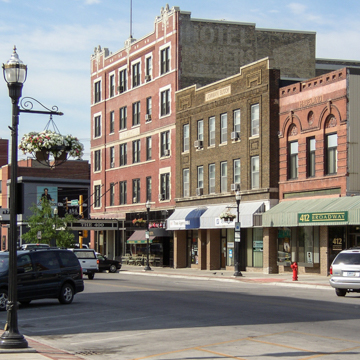You are here
The 400 Apartments (Powers Hotel)
The first three floors of this Classical Revival building were constructed for businessman T. F. Powers. Located near the Great Northern Railway depot, business was so successful that in 1919 two more floors were added in the same style. Elaborate terra-cotta medallions and other ornament at the cornice line reflect Prairie Style commercial influence. A painted sign that survives faintly on the north exterior wall proclaims that this is "Fargo's first totally fireproof hotel." The upper stories are served by an interior lightwell. The restored lobby is the dominating interior feature, and the connected restaurant, in which North Dakota native and vocalist Peggy Lee performed, was renovated in 1938 in Art Moderne. The Powers Hotel coffee shop was for many years a main gathering place in downtown Fargo. In 1983 the small hotel rooms were consolidated and the building renovated as subsidized apartments, serving mainly elderly residents. The renovation was generally sympathetic, but one notable loss to the building fabric resulted from replacement of delicate small-paned windows with larger panes.
Writing Credits
If SAH Archipedia has been useful to you, please consider supporting it.
SAH Archipedia tells the story of the United States through its buildings, landscapes, and cities. This freely available resource empowers the public with authoritative knowledge that deepens their understanding and appreciation of the built environment. But the Society of Architectural Historians, which created SAH Archipedia with University of Virginia Press, needs your support to maintain the high-caliber research, writing, photography, cartography, editing, design, and programming that make SAH Archipedia a trusted online resource available to all who value the history of place, heritage tourism, and learning.


